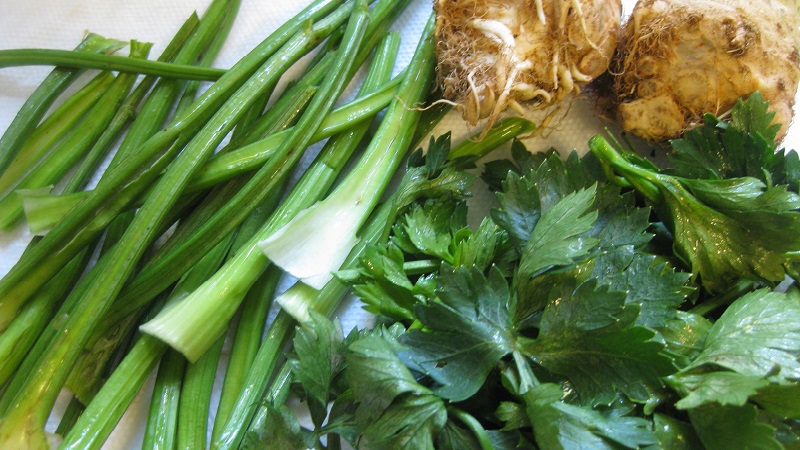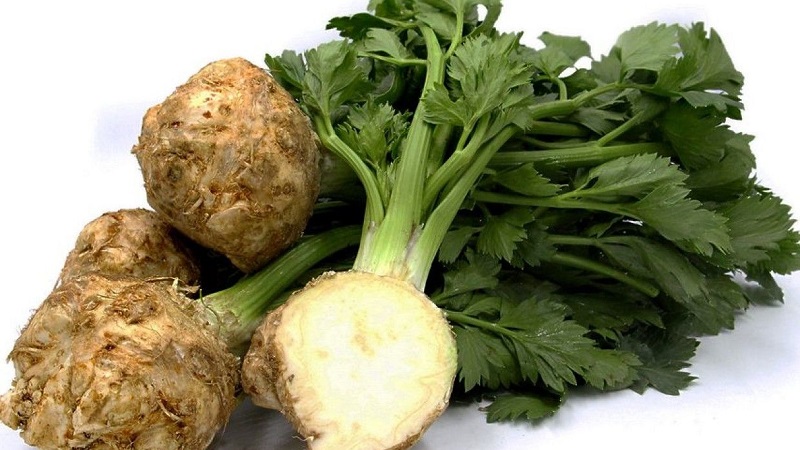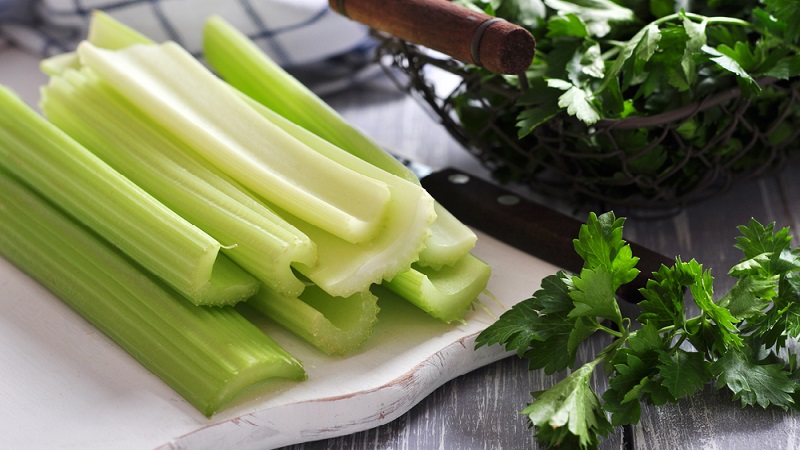Celery: what it tastes like, what it looks like and how to use it correctly
Celery is a tasty and healthy vegetable that has been appreciated by many healthy lifestyle enthusiasts and nutritionists due to its high content of vitamins, trace elements and other useful substances. It is used in cooking - when properly combined with other products, it complements and diversifies the daily menu. We will tell you about which type of celery is better to choose and how it is useful in this article.
The content of the article
How celery tastes and smells
The smell of a vegetable resembles parsley... Fresh celery leaves can also taste like cilantro. The greens of this vegetable are harsh, slightly bitter. The tangy spicy taste of celery is due to its high content of essential oils.

What does it look like
By appearance, celery greens are the most resembles lovage - another representative of the Umbrella family. Inexperienced housewives may confuse celery and parsley greens on the store counter. In this situation, it is easier to focus on the aroma: it is pronounced in celery, but not in parsley.
What do different types of celery taste like?
Celery happens three types: petiole, leaf and root. The root vegetable grows a large rounded root vegetable, which is used for cooking. The leaf is grown for greens; the stems and leaves of the petiole are eaten.
Differences between different types of celery:
- Petiole (stem) varieties are distinguished by thick, juicy stems that have a pleasant light taste and aroma.
- Leaf, unlike petiolate, does not have pronounced stems. The main part of the plant is lush, fragrant greens with a tart taste with a slight bitterness and a spicy, characteristic aroma.
- At the root vegetable, root vegetables are used, which are distinguished by a sweet-bitter, slightly pungent taste and rich aroma.
The taste of celery is reminiscent of parsley, but more aromatic and slightly bitter.... The taste of vegetable petioles is more neutral, after heat treatment it softens. The raw root vegetable is island, vaguely similar to a radish. It contains a large amount of essential oils, which makes its taste spicy, bittersweet.
What determines the taste and smell of celery
After drying, the greens of the vegetable lose their spice and bitterness, the taste becomes slightly sweet. Petioles and root crops change during cooking: their taste becomes more neutral, the characteristic smell is lost - it becomes less sharp and pronounced.
Reference. Leaf celery is recommended for smokers or those who have recently quit this bad habit, as the greenery removes nicotine from the body.
How does celery taste when cooked?
After boiling, celery stalks taste like zucchini... Root vegetables are boiled or fried; when they are cooked, their taste becomes less pronounced, similar to potatoes.
Cooking Uses
To the list of dishesthat can be made with celery include salads, soups, main courses, seasonings, sauces, green cocktails. Greens and petioles are often consumed fresh: they are used to make smoothies, vitamin salads with the addition of fruits and vegetables. Root vegetables are used as a substitute for potatoes - as a side dish for a meat dish, mashed potatoes and celery are made in a 1: 1 ratio.

Use, composition, properties
The vegetable culture includes vitamins A, B1, B6, B2, B9, C, E, PP, as well as beta-carotene.This vegetable is rich in magnesium, potassium, calcium, sodium, phosphorus, iron, essential oils. Thanks to such a rich composition celery has many useful properties:
- improves the functioning of the pancreas;
- removes cholesterol from the body;
- strengthens the walls of blood vessels;
- removes toxins and toxins;
- low calorie - can be used as a dietary product;
- removes excess water from the body and relieves swelling.
However there are contraindications: Do not eat this vegetable in large quantities for people suffering from kidney and gastrointestinal diseases, as this can lead to an exacerbation.
How to choose the right one
In order for the vegetable to bring maximum benefit and give all the vitamins and minerals, it must be fresh. How to choose healthy celery:
- leaves and stems are bright green, without spots and signs of wilting, traces of pests, yellowness, which indicates that the vegetable is stale;
- there are no dark spots on the green;
- stems are strong and resilient;
- pleasant smell without extraneous notes.
How to use
Stem celery is eaten raw and cooked... Root is eaten both boiled and fried, and raw, after washing and peeling. Greens are eaten fresh as an addition to salads or dried and seasoned in soups and main courses in winter.
Important! Root vegetables darken on contact with air, therefore, after peeling them, they are sprinkled with lemon juice or dipped in salted water.
Terms and conditions of storage
The stalks and leaves of celery are stored in the refrigerator until they begin to wither - about 3-4 days, and in the freezer - up to a year at a temperature of -18 ° C. Root crops keep in the refrigerator for up to three weeks or put in storage in the cellar in boxes with sand - so the vegetables will lie until spring. When storing root crops in the cellar, make sure that the room is dry and ventilated, otherwise the roots will quickly rot.

Reviews
We offer you to read the reviews of experienced gardeners and housewives about this vegetable.
Tatiana, Omsk: “I often use celery in apple salads and main courses. Few people know, but this plant contains a huge amount of vitamins, including vitamin C. And it gives a pleasant taste ".
Alexandra, Moscow region: “Celery grows in my garden all the time - we eat greens, stems, roots. I add it to salads, soups, meat dishes, and also dry it for the winter. And the stem is also good for losing weight ".
Catherine, Velikie Luki: “Initially, I used only dried celery as a seasoning for fish and soups. And then I tried the fresh stems. The taste is specific, sweetish. Since then I have been adding it to summer salads and second courses - it turns out very aromatic. In addition, it helps with digestive problems and promotes weight loss. ".
Conclusion
Celery is a vitamin vegetable, from which you can prepare a separate dish or add soups and main courses with its fresh herbs or stalks. By experimenting with different types of celery, you can come up with new recipes and diversify your daily diet.